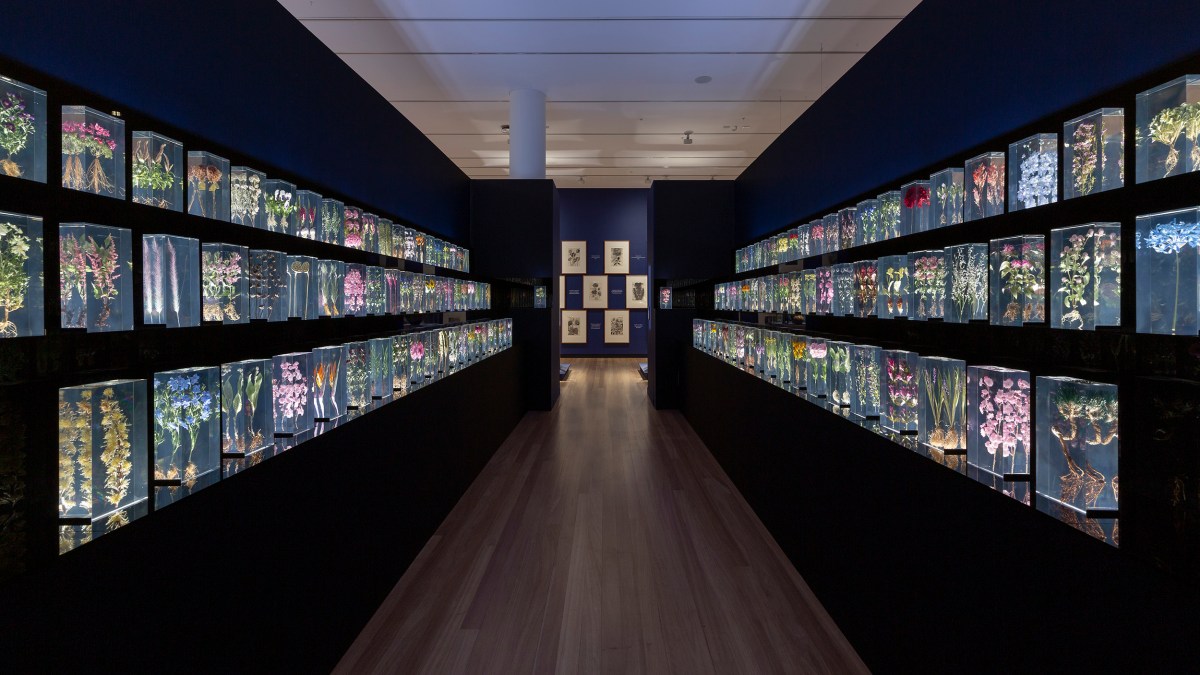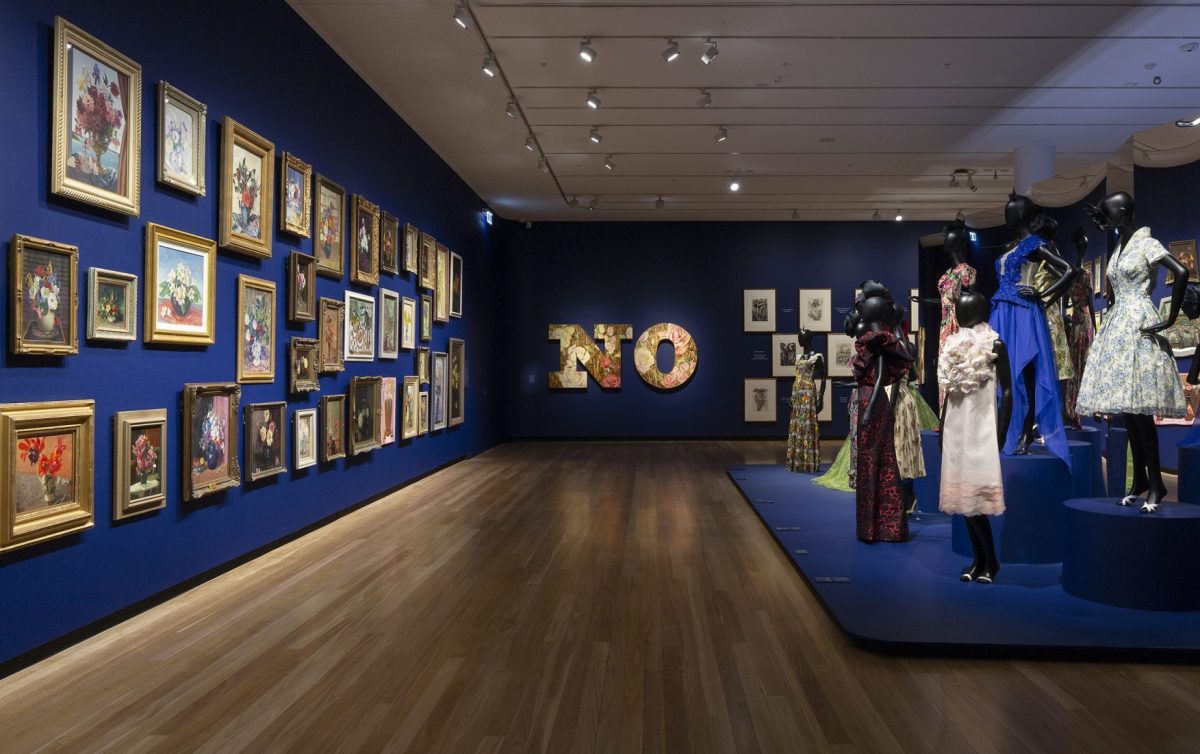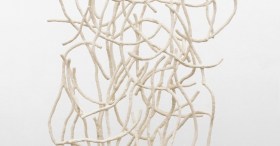While decked with a floral motif – from painting to pottery, garment to garland – Floribunda is not just about the beauty of flowers, but also their relationship to people, culture and even economics.
Presented by City of Casey’s Bunjil Place, a $125 million architectural feat combining gallery, theatre, library and civic space, and exclusively drawn from the National Gallery of Victoria’s Collection, Floribunda is a nuanced show.
Each grouping of artworks – some hung salon-style, others pushing historically dominant narratives to the periphery – highlight a different possibility of interpretation and appreciation. For example, visitors first encounter a wall of floral still life works near the entrance of the exhibition, many of which bear personal significance for curator David Sequeira, but are also incredibly diverse in terms of period and style. They range from Guelda Pyke’s 1954 oil painting Flowers and Fruit in an almost pop style, to French artist and Fauvism co-founder, André Derain, and his Roses in blue jug (Roses au picket bleu) (1920s).
A significant piece that shares the entrance space to the right is a late 17th century painting from the Netherlands, signalling the height of the Dutch tulip mania in 1636, when flowers, though ephemeral, were treated akin to currency. It’s paired with an elaborately embroidered gown by Adelaide fashion house Paolo Sebastian and designer Paul Vasileff, from The Snow Maiden collection, autumn/winter 2016.
While the ultramarine-coloured walls give Floribunda a historic feel, Azuma Makoto‘s captivating display of floral plants, with blooms preserved in resin, delivers a contemporary and impactful moment. The installation, Block Flowers (2023) was first shown at the 2023 NGV Triennial, and is recreated in full beauty despite the smaller display.

Another highlight is American artist Jim Dine’s series of prints, his flowers refusing to be contained to the paper, but instead dart out with energy that is wild and almost lethal. They are accompanied by a poem by Rumi, interspersed between the prints like a checkerboard, and read in full with sentiment by Sequeira on the day of the press tour. “Whatever lets the pomegranate flower blush like a human face, that is being said to me now. I blush.”
Many of the pieces in Floribunda ask us to slow down and stay in the present, just like memento mori still life paintings. It asks visitors to move through life with grace, especially because of its ephemerality.
Read: Exhibition review: Danie Mellor: marru I the unseen visible, Queensland Art Gallery
Everyone has a story with flowers. Our fascination with them extends far back into history and is perhaps still not fully understood. The appreciation of flowers, despite them seemingly lacking in function, speaks to the very core of our appreciation of art.
Floribunda is on view at Bunjil Place until 20 July; free.





